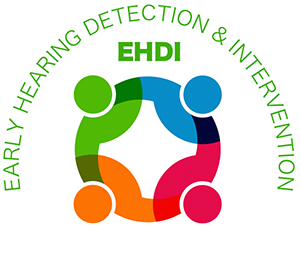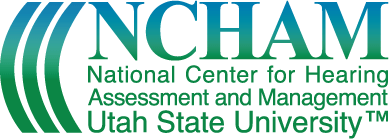EHDI System Self-Assessment using JCIH Early Intervention Recommendations: A Foundation for Continuous Improvement

Presented by: Nicole Brown, Minnesota EHDI Coordinator; Candace Lindow-Davies, Hands & Voices Headquarters/Minnesota Hands & Voices
When: This webinar was presented on April 23, 2015 at 1:30 pm–2:30 pm ET/12:30 pm–1:30 pm CT/11:30 am–12:30 pm MT/10:30–11:30 am PT
Description of Webinar Content
EHDI partners and programs are committed to implementing continuous quality improvement, yet may have difficulty prioritizing where to start or how to define and measure the various dimensions of quality that improve EHDI early intervention systems. In 2013, the Joint Committee on Infant Hearing utilized literature searches, existing systematic reviews, and professional consensus statements to develop general criteria for best practices in early intervention for children who are deaf and hard of hearing (Supplement to the JCIH 2007 Position Statement: Principles and Guidelines for Early Intervention After Confirmation That a Child Is Deaf or Hard of Hearing). Although these guidelines describe best practices in early intervention, they do not specify the exact means to identify where an organization might be in terms of achievement nor do they guide the stages of moving toward higher levels of quality. The ongoing use of an EHDI system self-assessment can provide a tangible means of guiding the quality drive and align partners in EHDI system improvement. This presentation will identify how state EHDI partners can collaboratively use self-assessment as a mechanism to evaluate their own systems and guide the development of quality improvement process to strengthen services delivered to children who are D/HH and their families. Presenters will share how Minnesota EHDI partners explored the use of self-assessment to identify strengths and areas where improvement is needed. Guidance from diverse state and national stakeholders regarding a recommended format of system self-assessment will be discussed. An additional purpose of this presentation is to gather qualitative input from participants about the value of assessing EHDI system progress towards JCIH goals and the prospect of creating a common self-assessment for use by other states.
Learning Objectives
- Identify how state EHDI partners can collaboratively use self-assessment as a mechanism to evaluate their own systems and guide the development of quality improvement activities to strengthen services delivered to children who are D/HH and their families.
- Discuss the value of assessing EHDI system progress towards JCIH goals.
- Explain how EHDI partners in Minnesota tested the use of self-assessment to identify strengths and areas where improvement is needed.
- Webinar Recording for EHDI System Self-Assessment using JCIH Early Intervention Recommendations: A Foundation for Continuous Improvement
- Transcript [PDF] for EHDI System Self-Assessment using JCIH Early Intervention Recommendations: A Foundation for Continuous Improvement
- Download a draft copy of Early Hearing Detection and Intervention System Self-Assessment Tool [PDF]


